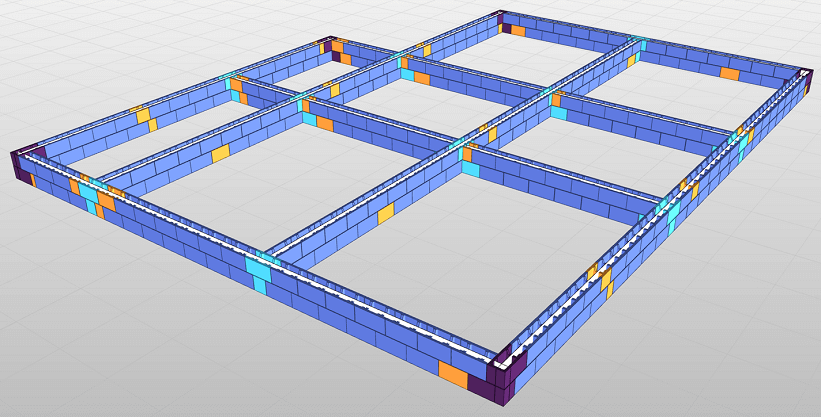
The construction sector is currently facing particular challenges, with record inflation having made construction ~20% more expensive in a year and some materials more than 40% more expensive. All this is a major headache for contractors, builders and entrepreneurs. In such an unstable market, choice, flexibility and speed are what keep the construction process running smoothly.
How can we protect ourselves and our customers in this volatile market?
We are already facing problems in the first stages of construction. Given the importance of time, have you ever had to wait days, weeks, even months for an estimate? The main answers from material suppliers are that we have a lot of orders, a shortage of labour and import problems. In this situation, it is important to be flexible, to be able to get quality quotations quickly, to compare them and to make the necessary adjustments to the project. It is this desire to deliver results as quickly as possible to our customers that prompted Vilniaus Betono gaminiai to look for customised solutions, as the tools available on the market did not offer the required functionality and speed.
Solutions to non-standard problems must be individual
Vilniaus betono gaminiai is a manufacturer of Haus blocks. These blocks are a combination of top quality, durability and environmental friendliness. Only “green” natural materials are used in the production of the blocks: water, sand, pebbles and cement. The factory is located in Lithuania, the product is Lithuanian, and local materials are used, so logistics or production shortages are not a problem. Having calculated the commercial offers so far in a fairly simple way, they decided to consult designers and software consultants NJ Optimal after assessing the need for “cones” to be turned into packaging.
After years of experience with software tools, it was clear that standard tools could not be expected to be very effective. Standard tools solve standard problems, but when you have a specific product and a lot of boundary conditions, you need a customised tool to solve them. After evaluating the task, the NJ Optimal numerical design team drew up a project plan, which they planned to follow to develop a tool that would satisfy the customer’s wishes and requirements.
Algorithms increase efficiency by a factor of 10 times
- Plan. The first task is to process the data received from the client, whether it is dwg, dxf, pdf or ifc files. The data is used to create planes, which are filled with the appropriate blocks. This workflow will be applicable to both wall and foundation blocks. The quantity of blocks obtained is counted to obtain the number of packs required and a plan for the layout of the individual rows is generated.
- Implementation. Due to the need for a wide range of formats and geometries and the ability to work in a “visual scripting” approach, the following applications are used for this project: Rhino3D, Grasshopper, VisualARQ. Rhino3D is an application base that is open source and supports many different formats and has unlimited possibilities through the Grasshopper plugin. VisualARQ is used as a plug-in that reads and exports to IFC formats.
- 2D →3D. This phase of the project is partially automated. The files sent by clients do not have a uniform structure, so we create curves from the pdf or dwg plan we receive, passing through the centre of the blocks. Next, the planes are created automatically and where the outer walls intersect, they are lengthened by a condition (block width/2), while where the inner wall meets the outer wall or two inner walls meet, this condition is only used to shorten the planes. This way we are sure that the blocks will join where we need them to.

- Laying out the blocks in a plane. The user environment developed allows you to use the algorithm without directly using Grasshopper, which means that the algorithm can be used without any knowledge of visual programming. Algoritmas palieka daug sprendimų atlikti pačiam vartotojui, pasirinkus atitinkamą plokštumą, turime pasirinkimus, kaip blokeliai užsibaigia, kaip jungiasi, koks jungimosi tipas, vietos, T formos sujungimai, pjautų blokelių pozicija, blokelio tipas. Kiekvieną plokštumą įvertinus ir paspaudus “bake” blokeliai perkeliami į Rhino aplinką, iš ten galime eksportuoti į įvairius formatus, o su VisualARQ papildiniu eksportuojame į IFC. Su kiekvienu “iškeptu” pamatų fragmentu gauname atnaujintą informaciją algoritme, apie reikalingus kiekius ir likučius. Gauti kiekiai gali būti atvaizduojami algoritme, vartotojo aplinkoje, Rhino aplinkoje, eksportuojamas į PDF ar excel.

- Results. The time taken to lay the foundation blocks has been reduced from 200min to 20min. 10 times (this is even higher when taking into account the number of new iterations where corrections are needed). The block list is generated automatically based on the quantities of the used block packs.
- Perspective. Further project plans – wall algorithm, wall sheet generation, automatic plan drawings, masonry wall calculation methodology, quantity optimisation.